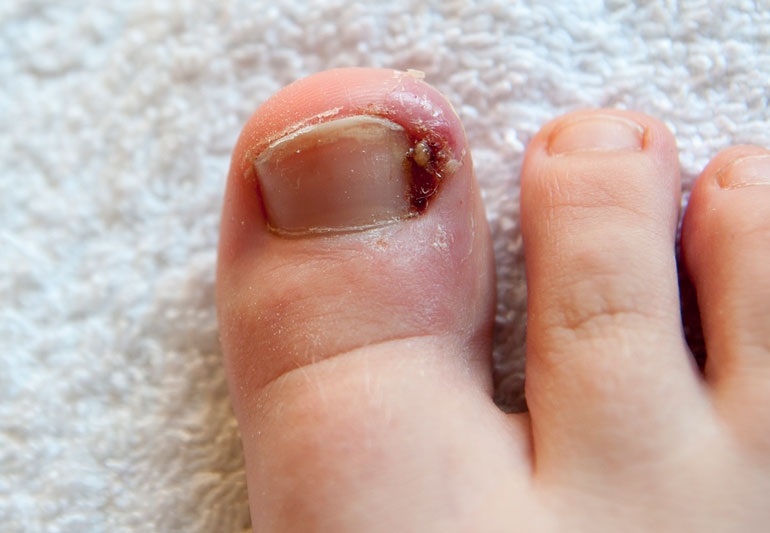Ingrown Toenails

Ingrown toenails come about when your toenail grows into the skin neighboring the nail. It mostly happens with the big toe. You can only get rid of a toenail by seeking medical attention. In most cases, ingrown toenails in Naperville affect teenagers and young adults. People in this age bracket experience more sweat, which can soften the nail fold. Older adults are also at risk of developing ingrown toenails due to reduced mobility and impaired vision, making it hard for them to take care of toenails that become thicker and harder to handle with age.
Causes of Ingrown Toenails
Ingrown toenails come about as a result of many different factors. Wearing poorly fitting shoes adds pressure on the nail when your big toe pushes against the second toe. If you cut your toenail too short, the bulging tissue can cause inflammation. You need to cut your toenails right above the nail bed. Too much sweating can soften the nail bed, making it easy to go through the skin. Other common causes of ingrown toenails include toe injuries, sports such as soccer which may damage the toenails, nail problems, and genetic predisposition.
Symptoms of Ingrown Toenails
Ingrown toenails commonly cause pain, ranging from mild discomfort to severe pain that worsens with time. Initial symptoms may include redness around the affected toenail, tenderness, and fluid buildup around the affected area. You can also feel pain when applying pressure on the toe and swollen skin in the affected area. If the nail cuts into the skin, it can cause an infection.
If you develop an infection, the symptoms may include redness and inflamed skin, tenderness, swelling, pus, bleeding, and skin growing over the nail. You should seek immediate treatment for ingrown toenails to prevent the symptoms from worsening.
How to Check for Ingrown Toenails
An ingrown toenail can curve downwards to get into the skin. In some cases, the skin may appear as if it is growing over the nail. A specialist can diagnose an ingrown toenail through a physical examination. If you have severe symptoms, you need to seek medical attention. Some severe conditions, such as specific types of tumors, can present themselves as ingrown toenails.
If you have an ingrown toenail, you should never cut a notch in your nail since it does not stop it from growing into the nail. You should also avoid trimming the nail close to the borders; it only makes the situation worse. Additionally, you need to avoid putting cotton below the nail. By doing this, you create the right environment for bacteria to grow, making it easier to get infected. You do not want to take ingrown toenail medication for a long time; it only masks the symptoms but does not treat the condition.
To summarize, an ingrown toenail is a condition where the toenail grows into the skin. It mainly affects the big toe. It results from too much sweat, cutting the nail too short, and wearing too-tight of shoes. Symptoms include redness and pain around the affected area, tenderness, and buildup of fluid. Ingrown toenails often grow downwards into the skin, and a specialist can diagnose the condition with a physical test.








